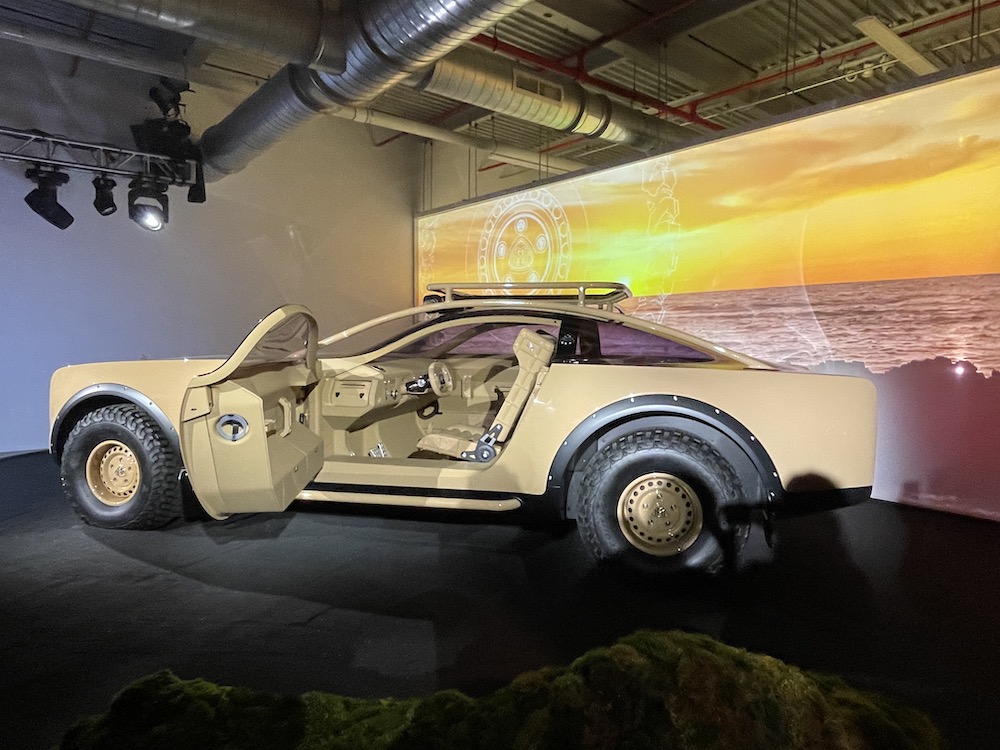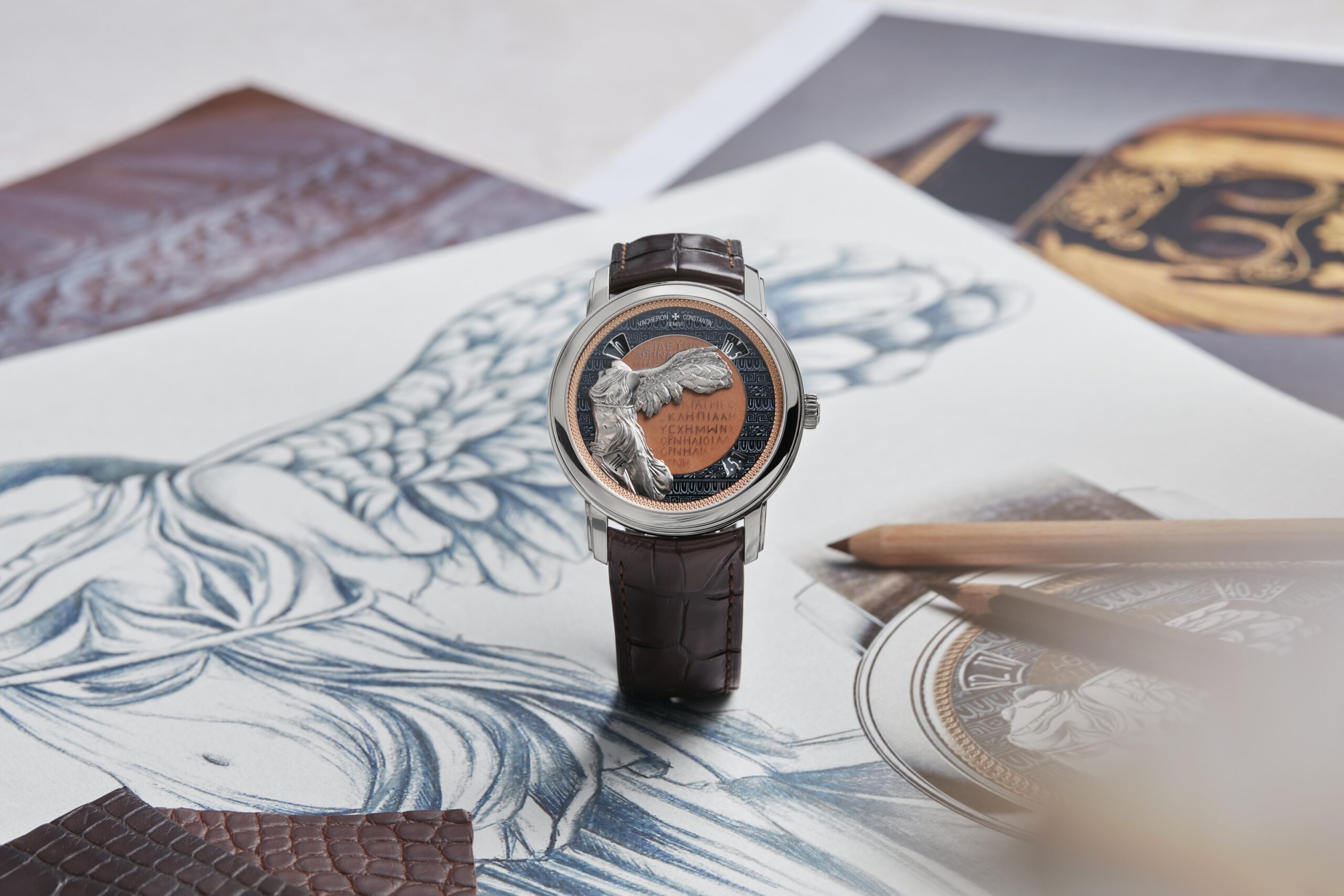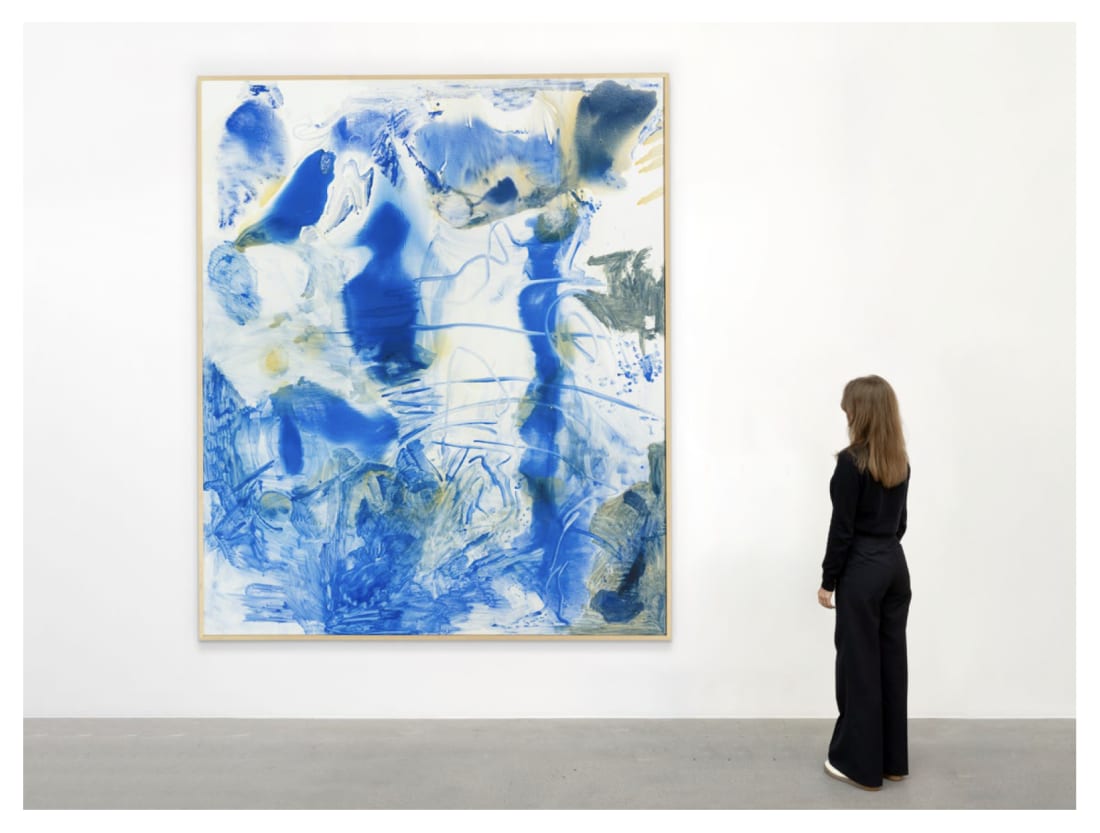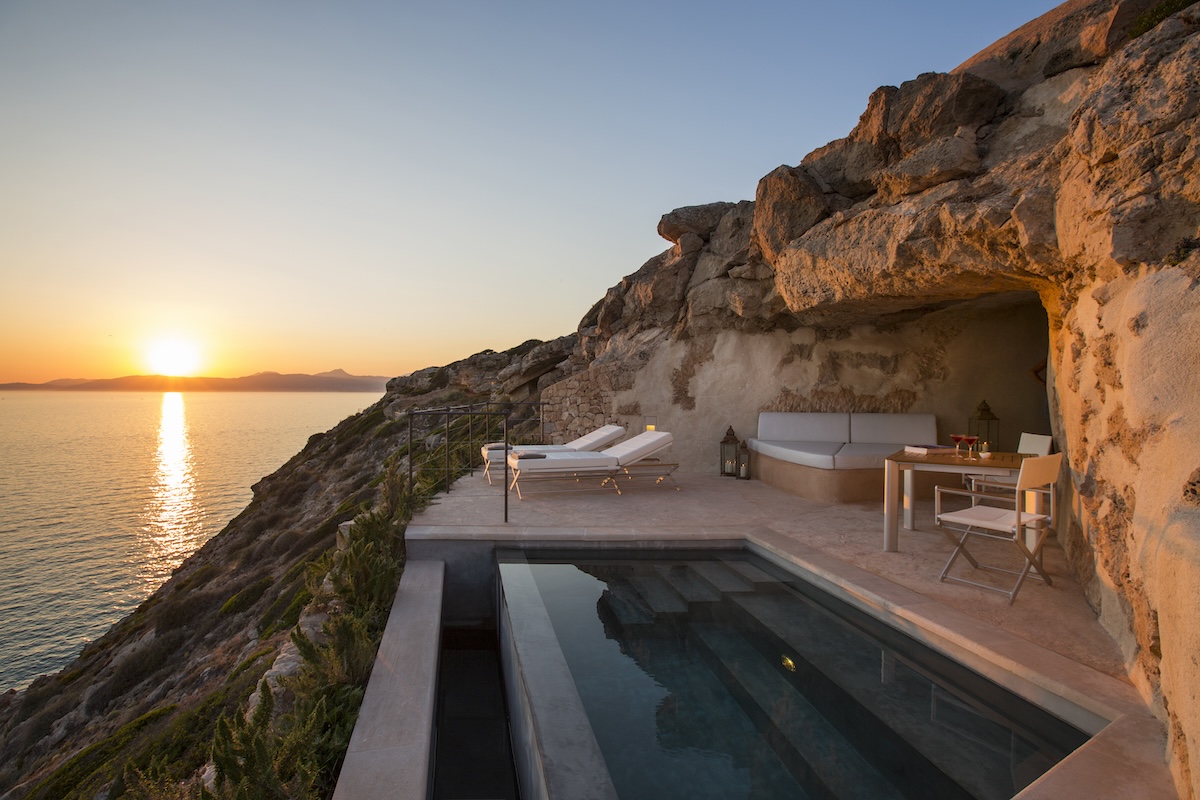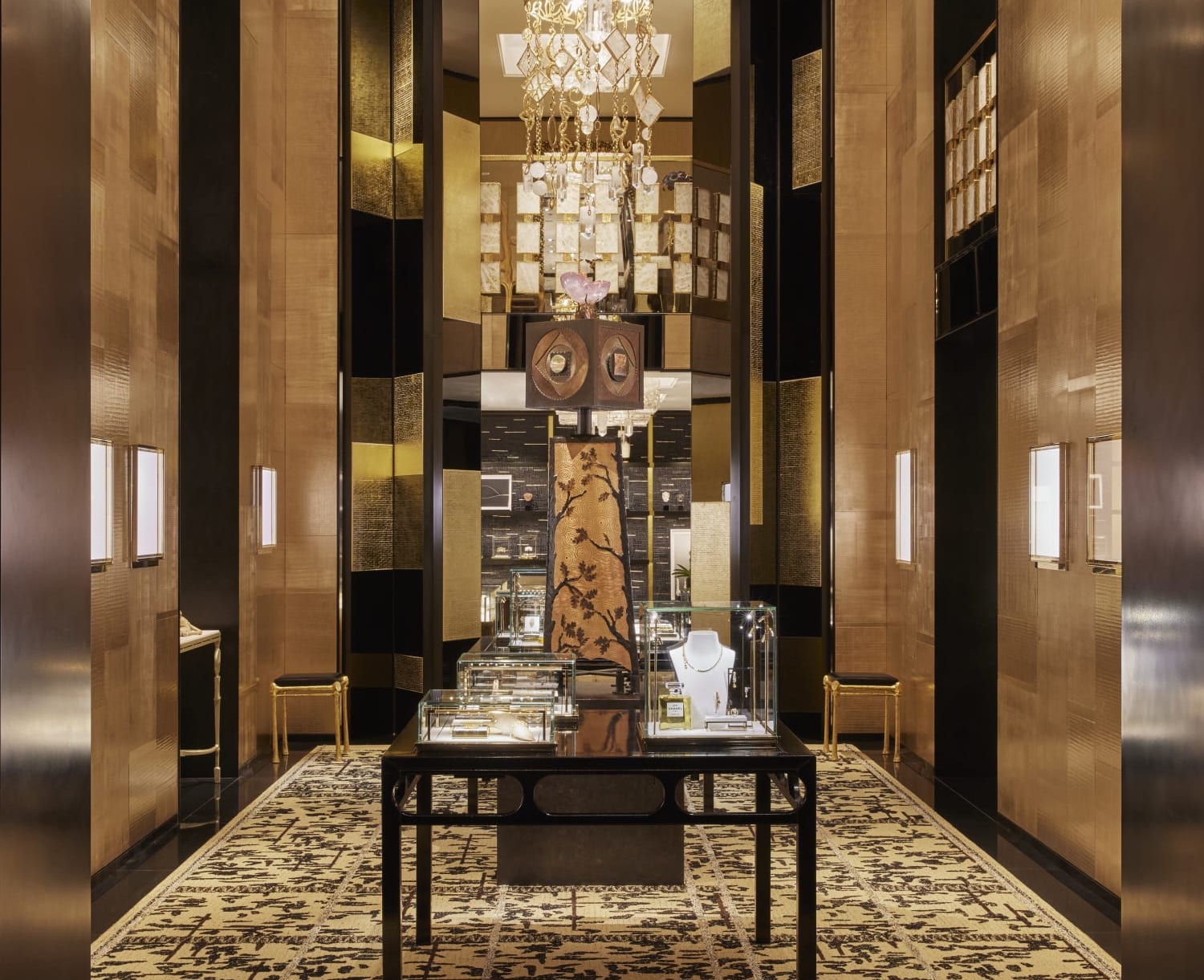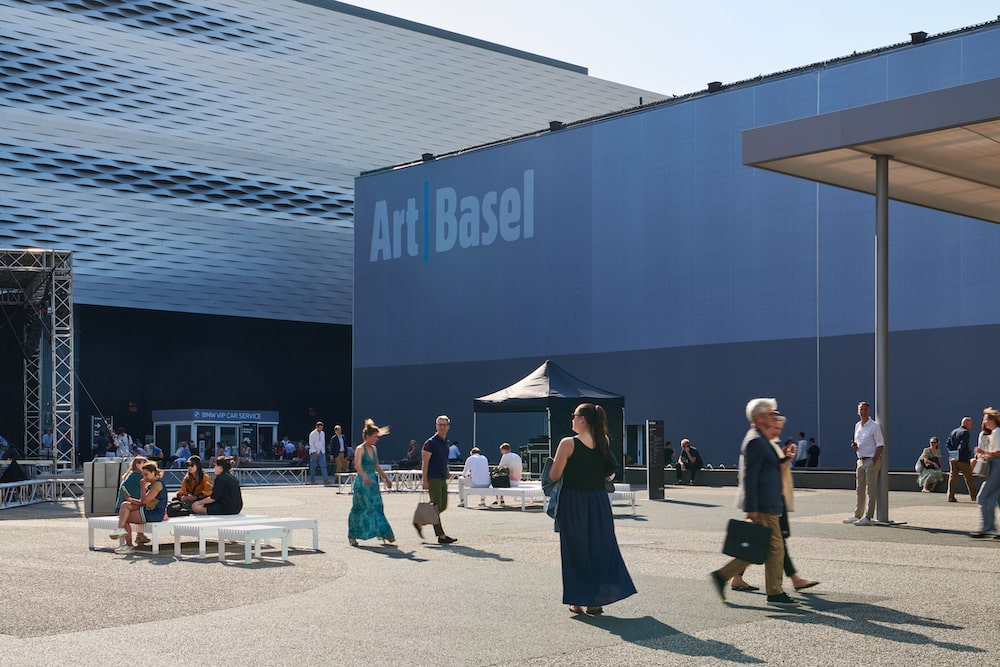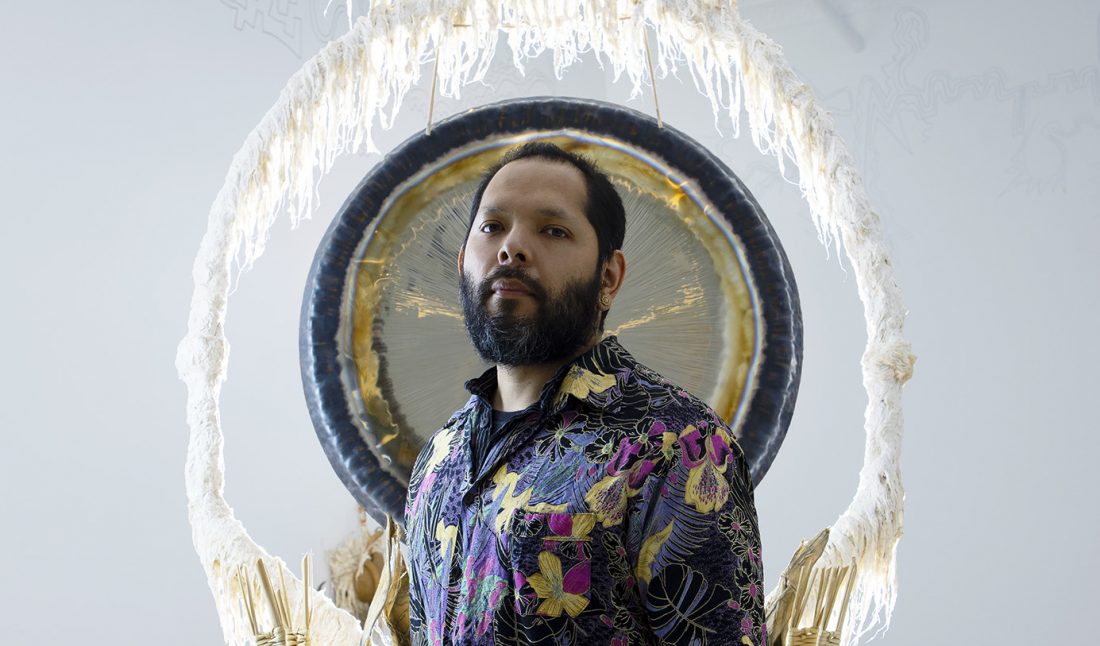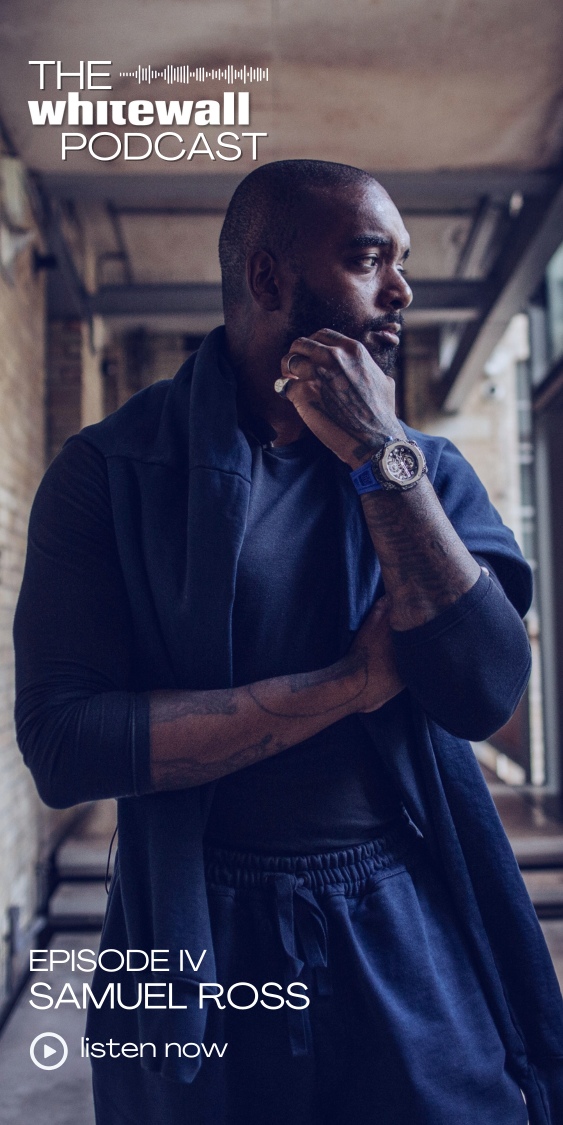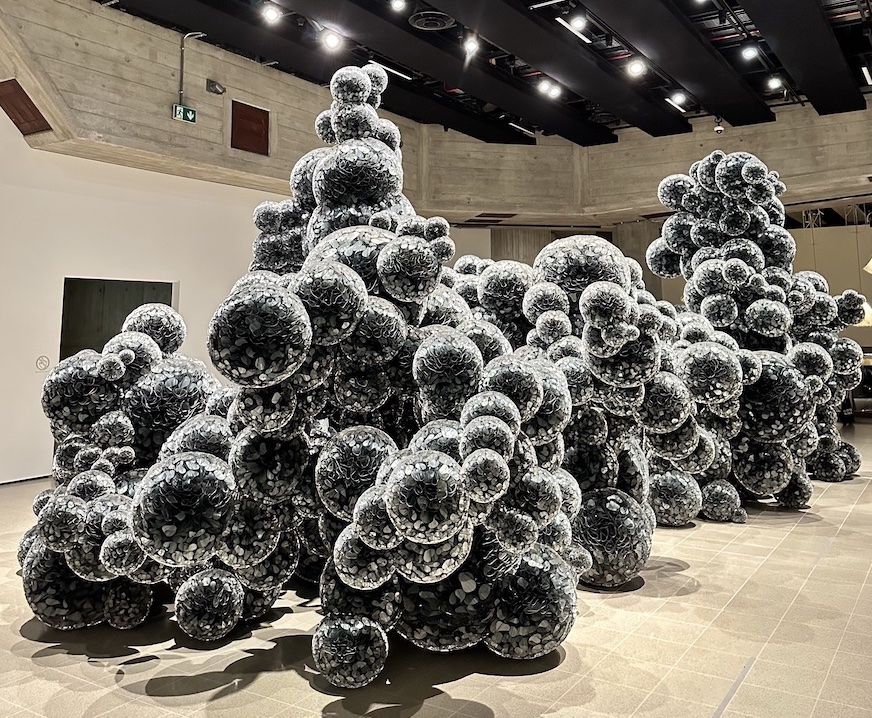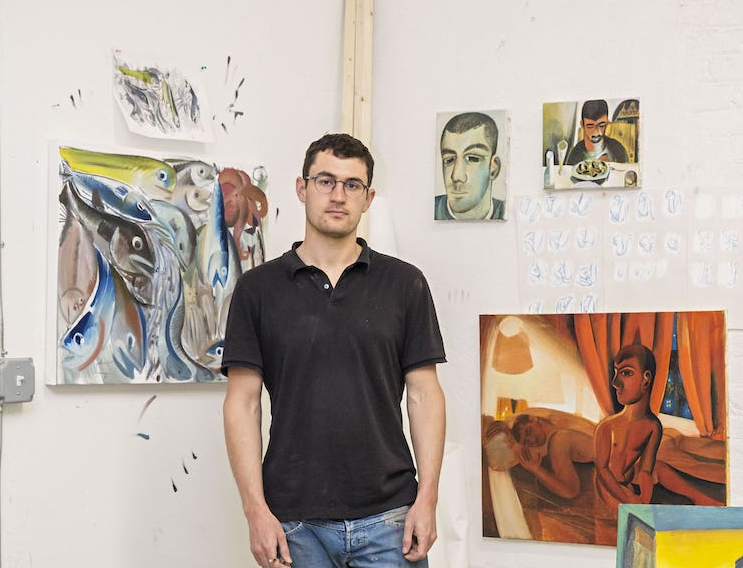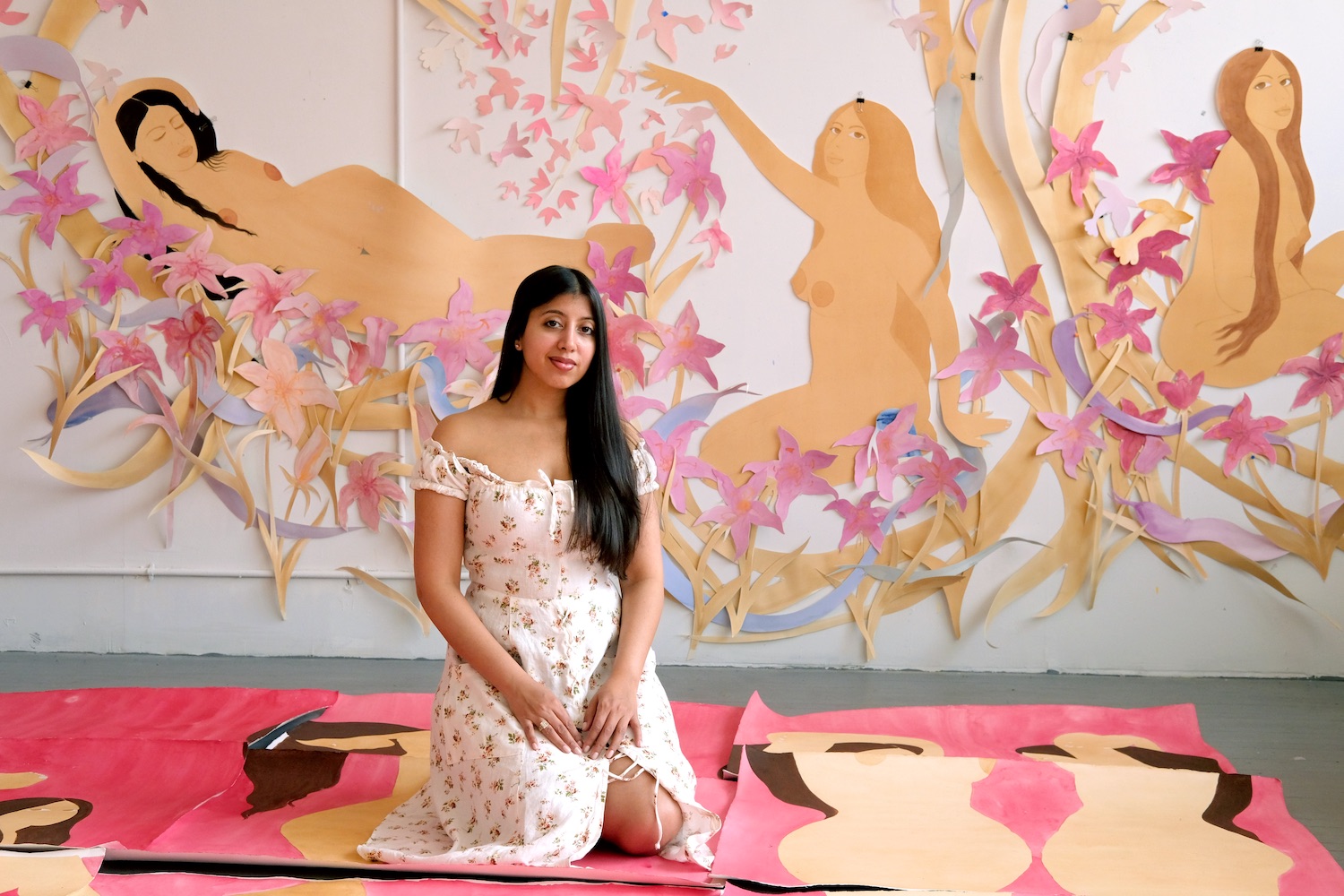Guadalupe Maravilla’s “Seven Ancestral Stomachs” is on view at P·P·O·W in New York through March 27. The exhibition features an installation of paintings and sculptures that address his personal journey in healing, as well as his efforts in activism and collaboration.
Maravilla became a U.S. citizen at age 26 after immigrating to the United States as an unaccompanied minor in the 1980s, fleeing the Salvadoran Civil War. Since recovering from colon cancer in 2013, the artist has been dedicated to supporting and fighting for the rights of undocumented immigrants. Maravilla’s towering “Disease Throwers” series—part instrument part shrine—as well as wall sculptures made from gourds address his ongoing process of healing from both cancer and generational trauma. Also on view is a group of work made in collaboration with traditional Mexican retablo painters.
Whitewall caught up with the Brooklyn-based artist, who will host this Sunday, March 21 at 1pm EST, a virtual sound bath with PPOW.
WHITEWALL: How did you want to represent this idea of healing genetic trauma in “Seven Ancestral Stomachs”?
GUADALUPE MARAVILLA: That name came from my own lived experience with healing from cancer and how the cancer treatments vastly alter my digestive system. During that time, I realized that western medicine was only part of overcoming illness. The other part was to heal spiritually. During that time, I learned from healers from all over the world. I worked with shamans, Brujox, curanderos and learned about ancient medicine as rituals. From those experiences, I learned that in order to heal properly, I had to heal seven generations forward and seven generations back.
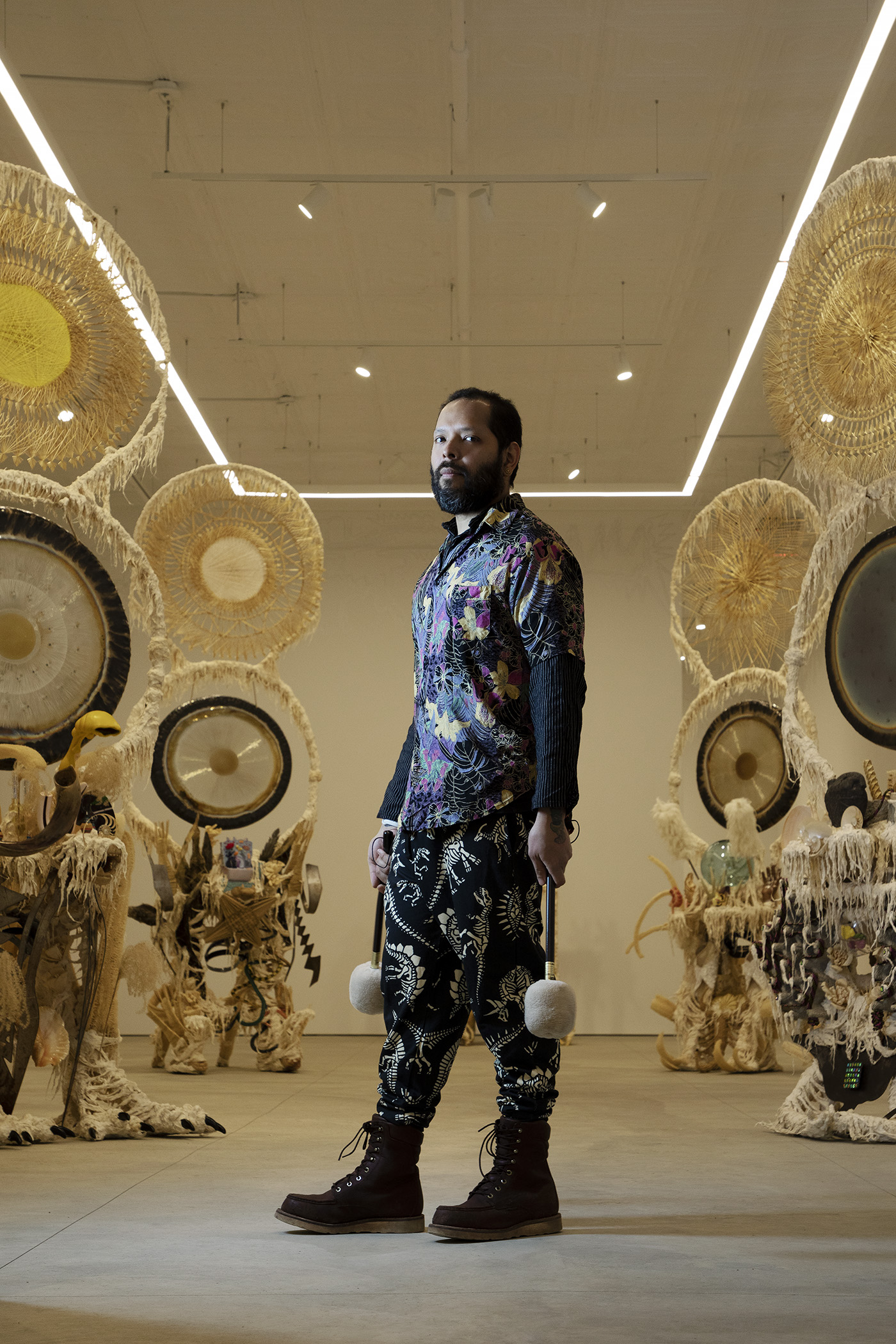 Guadalupe Maravilla, photo by Steve Benisty.
Guadalupe Maravilla, photo by Steve Benisty.
WW: How did your own journey of discovering sound therapy inspire the series of “Disease Throwers”?
GM: I experienced my first sound bath while undergoing cancer treatment in 2013, which was the beginning of my practice as a sound healer. After my first sound bath, I realized that sound can be used as medicine and I decided to make shrine sculptures for the instruments and that’s how the Disease Thrower sculptures started. The premise of gong therapy is as follows: our bodies are over 70% water, and the vibration of the gongs helps balance autoimmune diseases; relieve stress and anxiety; and help balance emotional, psychological, and in some cases physical pain.
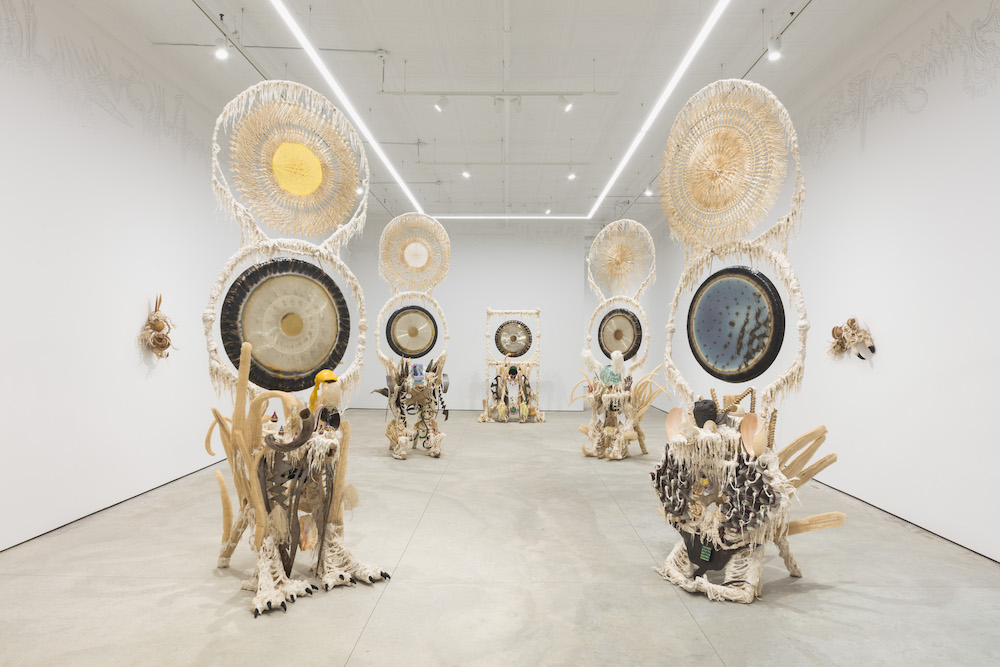 Installation view of Guadalupe Maravilla’s “Seven Ancestral Stomachs,” February 26 – March 27, 2021, courtesy of the artist and P·P·O·W, New York.
Installation view of Guadalupe Maravilla’s “Seven Ancestral Stomachs,” February 26 – March 27, 2021, courtesy of the artist and P·P·O·W, New York.
WW: How do you incorporate found materials into these sculptures, and why is that important for you?
GM: I create new mythologies that take the form of real and fictionalized rituals based on my own lived experiences. As someone that has experienced—and is healing from—the trauma of my border crossing, I relate to the anxieties often experienced by undocumented immigrants. I explore these neurological consequences of migration through performance and object-making.
For instance, my “Disease Thrower” sculptures are simultaneously shrines, healing instruments, and headdresses that reflect my own experiences of illness and recovery. They incorporate sound healing instruments and materials that I collect when I retrace the migratory route I first travelled as a child, from El Salvador, through Mexico, and into the United States. This endeavor perhaps best epitomizes how my work traces the history of my displacement while creating new visual memories for the entangled genealogy of other border crossing stories.
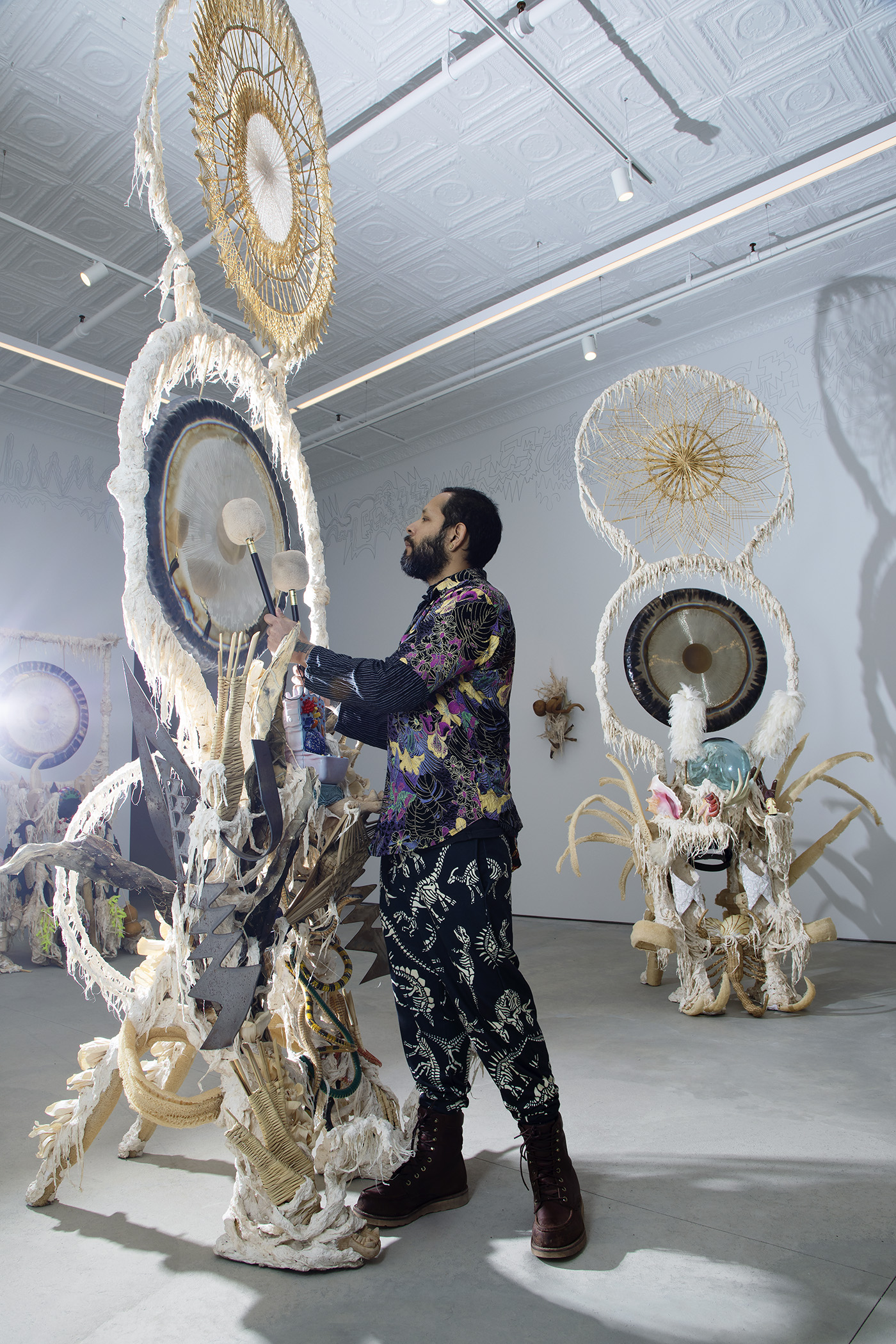 Guadalupe Maravilla, photo by Steve Benisty.
Guadalupe Maravilla, photo by Steve Benisty.
WW: Also included in the exhibition are a series of retablos, devotional paintings. How did you collaborate with a fourth generation retablo maker on these? What was that process like?
MG: The retablo painter Daniel Vilchis is someone I met during my trips to Central America and Mexico. I take these trips where I retrace my migration route and buy objects and hire artisanal artists for projects. I travel back to cities and countries that were part of my path to the United States when I migrated as an undocumented unaccompanied child from El Salvador.
I start making the retablos by sending detailed digital sketches to Daniel who is a four-generation retablo painter. I go back and forth with him by using WhatsApp until every detail is sorted out. It’s very important to build a micro-economy through my artistic practice—I prioritize hiring marginalized people and paying them well for their work. Rather than making these paintings myself, I choose to collaborate with Daniel to expand the cross-cultural exchange of my practice to help preserve the tradition of retablo painting carried over by Daniel in Mexico.
WW: Can you tell us about your studio? What is a typical day like for you there?
GM: A normal week for me usually consists of a balance of meditation at home, mutual aid/healing work all over New York City, teaching, working in my studio, working on site on some projects and playing with my three cats. More often all of the above happen in one day.
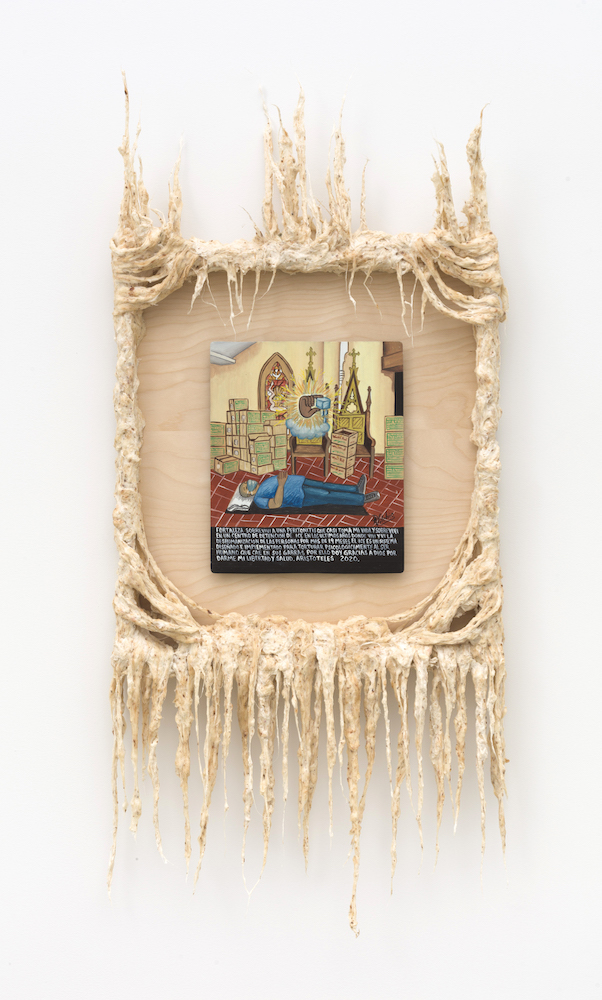 Guadalupe Maravilla, “Aristoteles’ story about being detained by ICE Retablo,” 2021, oil on tin, mixed media on wood, 45 1/2 x 19 3/4 x 4 1⁄4 inches, courtesy of the artist and P·P·O·W, New York.
Guadalupe Maravilla, “Aristoteles’ story about being detained by ICE Retablo,” 2021, oil on tin, mixed media on wood, 45 1/2 x 19 3/4 x 4 1⁄4 inches, courtesy of the artist and P·P·O·W, New York.
WW: Since recovering from colon cancer in 2013, how has your healing journey evolved? How integral is it to your artistic practice?
GM: My healing practice is constantly evolving. I will forever be healing from cancer and the trauma that is to be a cancer survivor. I am learning every day new ways of healing and incorporating them into my work. Sharing what I am learning is vital and I do this with my art and the mutual aid/healing work I do with marginalized communities in New York City.
